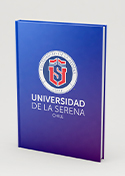Ciencias Agrícolas
Permanent URI for this community
Browse
Browsing Ciencias Agrícolas by Author "Mejias Nicol"
Assessment of Bio-Compounds Content, Antioxidant Activity, and Neuroprotective Effect of Red Cabbage (Brassica oleracea var. Capitata rubra) Processed by Convective Drying at Different Temperatures
(MDPI, 2023/09/01) Vega-Galvez Antonio; Gomez-Perez Luis S.; Zepeda Francisca; Vidal Rene L.; Grunenwald Felipe; Mejias Nicol; Pasten Alexis; Araya Michael; Ah-Hen Kong Shun
Parkinson's disease (PD) is the second most common neurodegenerative disorder, and no efficient therapy able to cure or slow down PD is available. In this study, dehydrated red cabbage was evaluated as a novel source of bio-compounds with neuroprotective capacity. Convective drying was carried out at different temperatures. Total phenolics (TPC), flavonoids (TFC), anthocyanins (TAC), and glucosinolates (TGC) were determined using spectrophotometry, amino acid profile by LC-DAD and fatty acid profile by GC-FID. Phenolic characterization was determined by liquid chromatography-high-resolution mass spectrometry. Cytotoxicity and neuroprotection assays were evaluated in SH-SY5Y human cells, observing the effect on preformed fibrils of alpha-synuclein. Drying kinetic confirmed a shorter processing time with temperature increase. A high concentration of bio-compounds was observed, especially at 90 C-degrees, with TPC = 1544.04 +/- 11.4 mg GAE/100 g, TFC = 690.87 +/- 4.0 mg QE/100 g and TGC = 5244.9 +/- 260.2 mu mol SngE/100 g. TAC degraded with temperature. Glutamic acid and arginine were predominant. Fatty acid profiles were relatively stable and were found to be mostly C18:3n3. The neochlorogenic acid was predominant. The extracts had no cytotoxicity and showed a neuroprotective effect at 24 h testing, which can extend in some cases to 48 h. The present findings underpin the use of red cabbage as a functional food ingredient.
Valorization of Sweet Cherries (Prunus avium) Using Different Drying Methods for Obtaining a Healthy Dried Product
(AMER CHEMICAL SOC, 2023/02/17) Uribe Elsa; Pasten Alexis; Mejias Nicol; Vega-Galvez Antonio
Large amounts of sweet cherries (Prunus avium) are annually discarded in Chile because they do not meet exportation standards, and these cherries are sold as fresh fruit in local markets at a low price. To increase the valorization of this important fruit and avoid environmental problems, different drying methods to process this fruit are proposed in this work. Five techniques were used: freeze-drying (FD)
